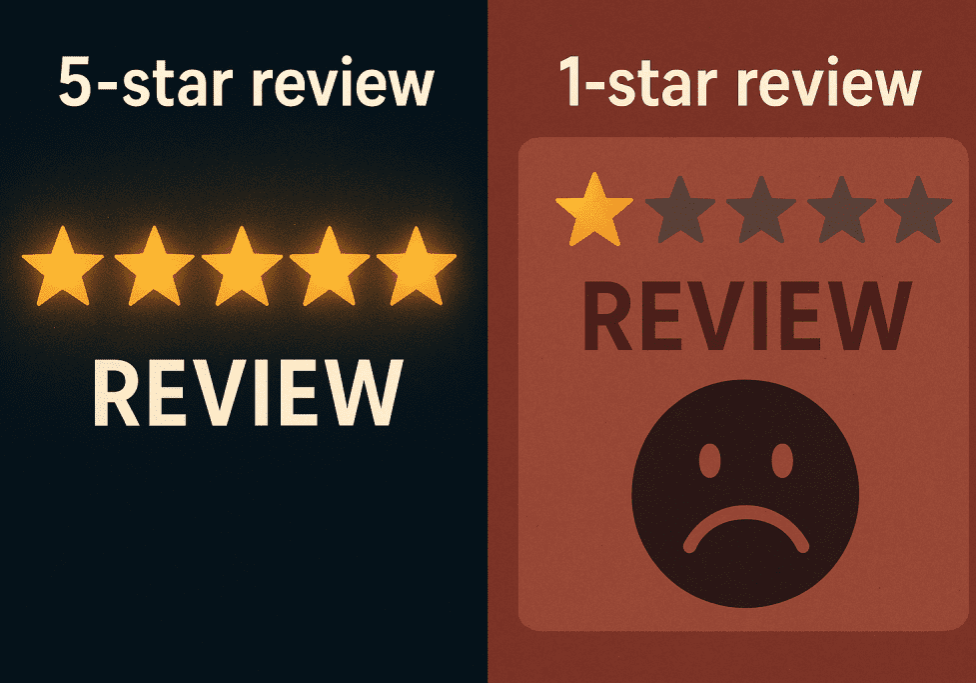
Boost Your Business with These 10 Must-Have Website Features for Local Customer Generation
In today’s digital age, having a website is crucial for small businesses. However, not just any website will do; you need one that actively generates local customers and works for you around the clock. This blog will walk you through ten essential features that can transform your website into a local customer magnet. By the end of this post, you’ll have actionable insights to enhance your online presence and drive customer engagement and conversions.
1. Clear and Compelling Call to Action
Every small business website needs clear and compelling calls to action (CTAs). These are prompts that guide your visitors on what to do next, whether it’s making a purchase, signing up for a newsletter, or booking a service. Effective CTAs are concise and action-oriented, such as “Get Started Now” or “Book Your Free Consultation Today.”
CTAs should be prominently displayed on your homepage and throughout your site. They should stand out visually, using contrasting colors or buttons. Avoid overwhelming visitors with too many CTAs; instead, focus on one primary action you want them to take on each page.
Position your CTAs strategically, such as at the top of the page, at the end of blog posts, and within your site’s navigation menu. This ensures that visitors encounter them naturally as they browse your site.
2. Mobile-Friendly Design
A mobile-friendly design is non-negotiable in today’s smartphone-driven world. With more people browsing the internet on their mobile devices, your website must look and function seamlessly on smaller screens. A responsive design automatically adjusts the layout to fit any screen size, providing a smooth user experience.
Mobile-friendly websites load faster, which is crucial for retaining visitors. Slow-loading sites can frustrate users, leading them to leave before even seeing your content. Use tools like Google’s Mobile-Friendly Test to check how your site performs on mobile devices.
Ensure that all elements, such as images, text, and buttons, are easily accessible and readable on mobile. Avoid using Flash, which isn’t supported on most mobile devices, and opt for HTML5 instead.
3. Local SEO Optimization
Local SEO optimization is key to attracting local customers. This involves strategies and techniques that help your website rank higher in local search results. Start by claiming and optimizing your Google My Business listing, ensuring your business name, address, and phone number are accurate and consistent across all platforms.
Use local keywords throughout your site, such as “best coffee shop in [city]” or “affordable plumber near me.” Include these keywords in your meta titles, descriptions, headers, and content to improve your local search visibility.
Encourage satisfied customers to leave positive reviews on Google and other review sites. Reviews not only boost your credibility but also play a significant role in local search rankings.
4. High-Quality Content
High-quality content is crucial for engaging visitors and keeping them on your site longer. This includes blog posts, articles, videos, and infographics that provide value to your audience. Focus on creating content that answers common questions, solves problems, or offers useful information related to your industry.
Regularly updating your content keeps your site fresh and relevant. Search engines favor sites that consistently publish new, high-quality content. Set a content calendar to plan and schedule your posts in advance.
Incorporate keywords naturally within your content to improve SEO. Use headings, subheadings, and bullet points to break up text and make it easier to read. High-quality images and videos can also enhance your content, making it more engaging and shareable.
5. Online Booking System
An online booking system simplifies the process for customers to schedule appointments or services with your business. This feature is especially useful for service-based businesses like salons, spas, and consultants. An easy-to-use booking system can significantly reduce no-shows and streamline your scheduling process.
Choose a booking system that integrates seamlessly with your website and allows customers to book appointments directly from your site. Ensure it sends automatic confirmations and reminders to both you and your clients.
Offer flexibility with your booking options, such as allowing customers to choose their preferred date and time. Provide detailed information about your services, pricing, and availability to help customers make informed decisions.
6. Engaging Visuals
Engaging visuals are essential for capturing visitors’ attention and conveying your brand’s message. High-quality images, videos, and graphics can make your website more appealing and memorable. Invest in professional photography or stock images that reflect your brand’s identity and values.
Videos are highly effective for showcasing your products, services, or customer testimonials. They can provide a more dynamic and immersive experience than text alone. Embed videos on your homepage, product pages, and blog posts to increase engagement.
Use graphics and infographics to present complex information visually. Infographics can simplify data and make it more digestible for your audience. Ensure your visuals are optimized for fast loading times to prevent slowing down your site.
7. Customer Testimonials and Reviews
Customer testimonials and reviews are powerful tools for building trust and credibility. Positive feedback from satisfied customers can influence potential clients’ purchasing decisions. Displaying testimonials and reviews prominently on your website can reassure visitors of your business’s quality and reliability.
Feature testimonials on your homepage, service pages, and dedicated testimonials page. Include the customer’s name, photo, and any relevant details to add authenticity. Video testimonials can be particularly compelling, as they provide a personal touch.
Encourage your customers to leave reviews on third-party sites like Google, Yelp, and Facebook. Respond to reviews—both positive and negative—to show that you value customer feedback and are committed to improving your services.
8. Strong About Us Page
A strong About Us page helps visitors connect with your business on a personal level. It should tell your story, highlight your values, and introduce your team. This page is an opportunity to showcase your business’s unique personality and build a connection with your audience.
Start with a compelling introduction that explains what your business does and why it matters. Share your mission, vision, and core values to give visitors insight into your company’s purpose.
Include photos and bios of your team members to humanize your brand. Highlight their expertise, experience, and roles within the company. Personal touches like hobbies or fun facts can make your team more relatable.
9. Easy Navigation
Easy navigation is crucial for providing a positive user experience. A well-organized website helps visitors find the information they need quickly and efficiently. Use a clear and intuitive menu structure to guide users through your site.
Organize your menu into logical categories and subcategories. Include links to your most important pages, such as Home, About Us, Services, Blog, and Contact. Use breadcrumb navigation to help users understand their location within your site.
Incorporate a search bar to allow users to find specific content quickly. Ensure your website’s design is clean and uncluttered, with plenty of white space to improve readability and focus on key elements.
10. Contact Information and Forms
Having easily accessible contact information and forms is essential for converting visitors into customers. Make it simple for people to reach out to you with inquiries, feedback, or service requests.
Include your business’s phone number, email address, and physical address on your Contact Us page. Embed a Google Map to show your location and make it easier for visitors to find you.
Use contact forms to collect information from potential customers. Keep forms short and straightforward, asking for only essential details. This reduces friction and increases the likelihood of visitors completing the form.
Conclusion
Transforming your small business website into a local customer-generating machine doesn’t have to be complicated. By incorporating these ten must-have features, you can enhance your online presence, engage your audience, and drive more local traffic to your business.
Remember, your website is often the first impression potential customers have of your business. Make it count by offering a user-friendly, informative, and visually appealing experience. Start implementing these features today, and watch your customer base grow.
Other Articles You Might Like...



